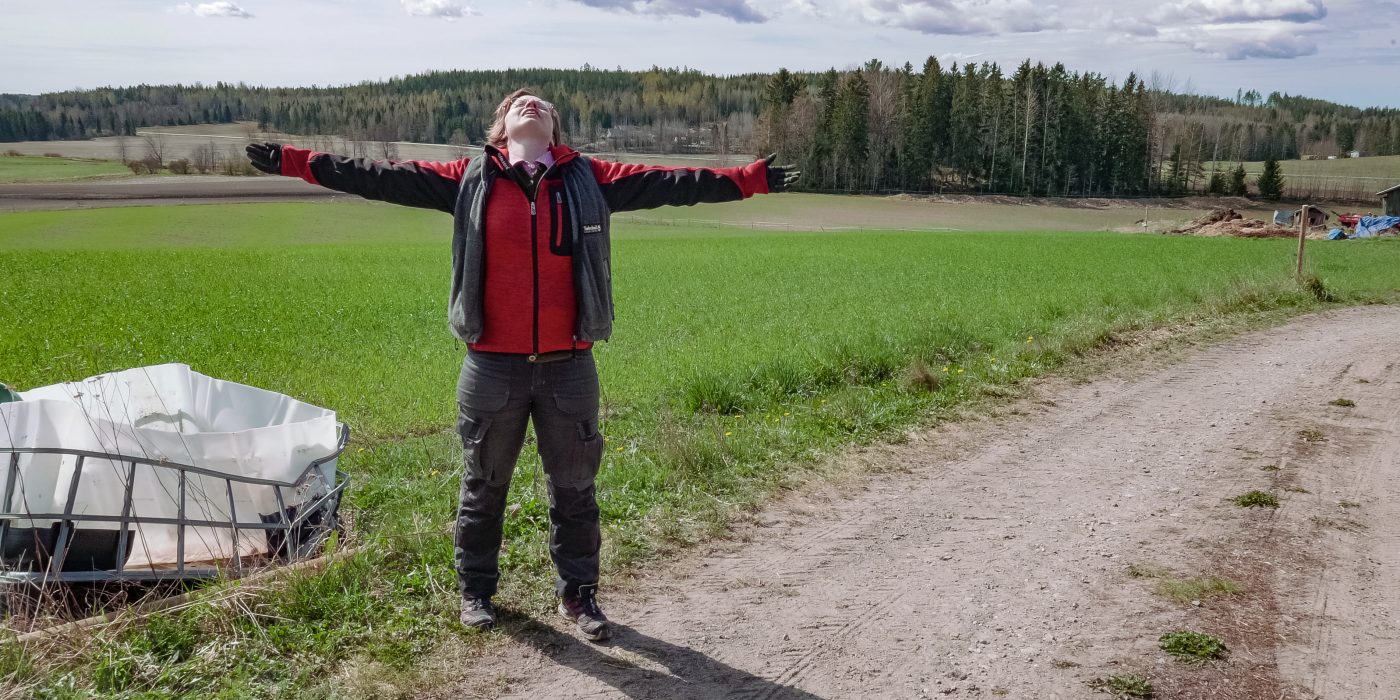“For carbon sequestration it is essential to keep the soil continuously covered in vegetation”, explains farmer Eliisa Malin to MEP Ville Niinistö when they meet at Eliisa’s farm to discuss how sustainable farming could be promoted. “The same farming methods, that promote carbon sequestration, also improve the fertility of the soil, minimize run-off of nutrients into the waters, maintain biodiversity and are economically profitable for the farmer. There, however, are obstacles in the way of spreading farming methods that store carbon in the soil.
“When our child was young, they’d stand there on the field, hands up reaching for the sky, and shout ‘I’m so free!'” tells farmer Eliisa Malin to MEP Ville Niinistö. We are walking around lands Eliisa and her husband Mika own in Vihti, Southern Finland. The Vierelä organic farm was passed down from Eliisa’s great-grandmother to her grandmother, mother and finally to Eliisa. “It’s very important for us to pass on a farm that is economically and environmentally sustainable. We want the soil to be fertile for future generations and to be resistant to changing weather conditions and other challenges”, Eliisa continues.
Eliisa is a carbon farmer. It means that as she produces crops, she cultivates the soil so that it stores as much carbon as possible. This is achieved by keeping the soil continuously covered with vegetation, using organic fertilizers, ploughing less, correct crop rotation and using suitable varieties of crops. “For carbon sequestration it is essential to keep the soil continuously covered in vegetation”, explains Eliisa. During photosynthesis, the plants take carbon dioxide from the air. When the soil is covered in vegetation even after the harvest, carbon sequestration continues longer. The land is kept green after the harvest with catch crops that Eliisa is especially excited about.
“According to the classic definition, catch crops are plants that catch the nutrients left behind by the main crops. But for me they are so much more! Catch crops, such as white clover and Italian rye-grass, grow underneath the main crop and are left there to continue photosynthesis and store carbon after the harvest of the main crop. They protect the valuable topsoil from erosion and through that prevent nutrient run-offs”, Eliisa explains. “We invest in our topsoil and want it to stay put. The same farming methods that promote carbon sequestration also improve the fertility of the soil, minimize nutrient pollution of waters, maintain biodiversity and are economically profitable for the farmer.”
There are obstacles in the way of spreading farming methods that store carbon in the soil.
“We are in a situation, where the farmers want to introduce new methods. The European Union gives subsidies to farmers, and Finland has some national aids as well, but the structures and the regulations of the subsidies may even prevent the spread of new, good and environmentally friendly farming methods”, says Ville Niinistö. “With the new seven-year subsidy period starting next year, our task is to steer the regulations to a direction that promotes farming that improves the fertility of the soil and is good for the environment. At the farm I’ve learned that the farmers are already doing many of things that the decisionmakers have just begun to consider. Now we must move from words to action, and the subsidies must allow for that.”


